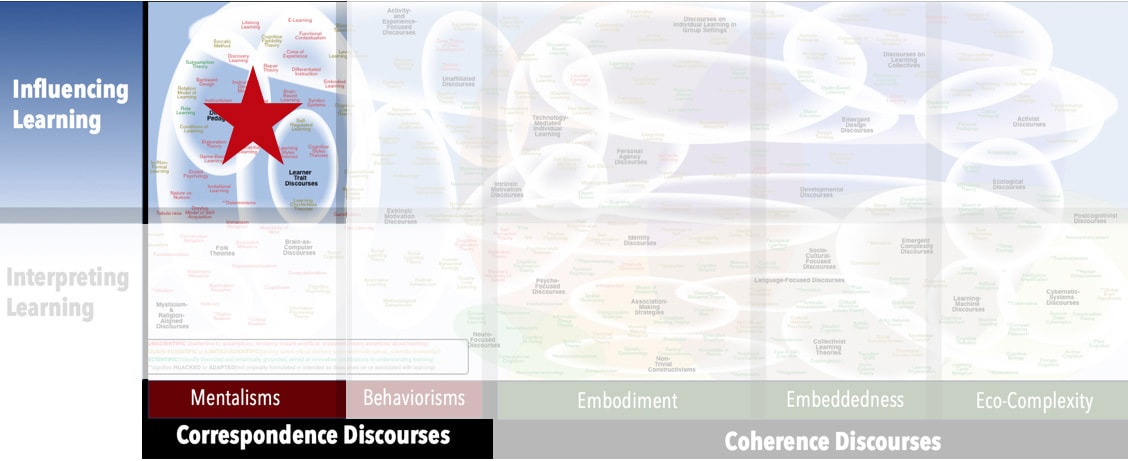Focus
Role of physical activity in learningPrincipal Metaphors
A wide range of perspectives is associated with Embodied Learning, and so it’s impossible to point to a single cluster of metaphors. However, it is fair to say that most versions are tethered to Folk Theories, and so most invoke notions like the following:- Knowledge is … external facts and possibilities
- Knowing is … internalized models
- Learner is … individual capable of moving
- Learning is … internalizing
- Teaching is … representing
Originated
2000sSynopsis
The phrase Embodied Learning is invoked to name and describe a wide range of educational perspectives. To our reading, the only shared detail across these perspectives is a focus on what teachers should do. Advice on actual physical activity varies dramatically, with some commentators recommending nothing more than freedom to move, others arguing that movements should be fitted to concepts (e.g., shifting blocks to learning addition, or gesturing upward to signify increase), and still others emphasizing interacting with virtual worlds (i.e., substituting imagined motion for actual movement). Associated products include:- Body Activated Learning™ (Aubrey Schmalle, 2020s) – a marketed framework of activities that are claimed to energize and restore learners, focused in particular on countering the effects of extended and extensive uses of digital technologies
- Brain Gym® (Paul Dennison, Gail Dennison, 1980s) – a commercial program comprising 26 movement-based activities that are asserted to prepare one for learning by integrating the “whole brain.” Associated discourses include:
- Cross Patterning (Paul Dennison, Gail Dennison, 1980s) – a category of movement exercises that are asserted to enhance learning by amplifying connectivity of brain hemispheres
- Educational Kinesiology (Edu-K) (Paul Dennison, Gail Dennison, 1980s) – a self-development program based on Brain Gym®, focused on formulating and attaining life goals
Commentary
It’s impossible to offer a one-size-fits-all commentary on Embodied Learning, because interpretations and advice vary wildly. However, what can be said is that the huge majority of proponents assume Folk Theories’ mind/body and internal/external dualisms. Hence, they tend to be oriented by a belief that physical movement is a means to internalize knowledge. As such, most advice on Embodied Learning seems completely oblivious to Embodied Cognition’s orienting premise that one’s body is part of one’s cognitive system – that is, the body is an integral to one’s being, rather than a container or a cage for the mind.Authors and/or Prominent Influences
DiffuseStatus as a Theory of Learning
Embodied Learning is not a theory of learning. Most popular versions of Embodied Learning are not informed by scientific theories of learning, and few go beyond a simplistic assumption that bodies should move.Status as a Theory of Teaching
Most versions of Embodied Learning are expressly concerned with giving advice to teachers.Status as a Scientific Theory
Unsurprisingly, physical activity – including gesturing, interactive digital media, and bodily activity in general – has been empirically demonstrated to contribute to improved attitudes, better focus, and increased achievement. Unfortunately, very little of the associated research is grounded in an explicit or defensible theory of learning, and so little can of Embodied Learning be properly described as scientific.Subdiscourses:
- Body Activated Learning
- Brain Gym
- Cross Patterning
- Educational Kinesiology (Edu-K)
Map Location

Please cite this article as:
Davis, B., & Francis, K. (2023). “Embodied Learning” in Discourses on Learning in Education. https://learningdiscourses.com.
⇦ Back to Map
⇦ Back to List
